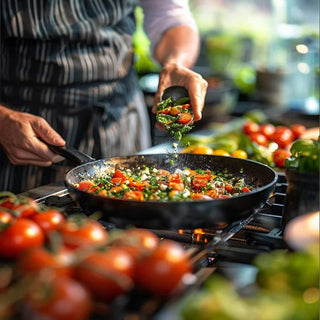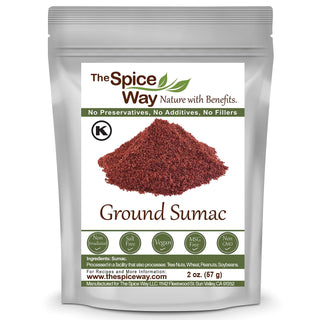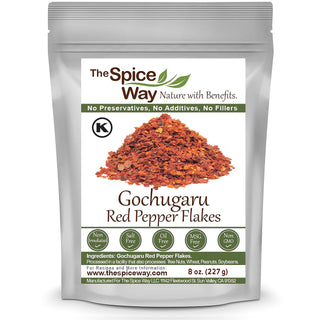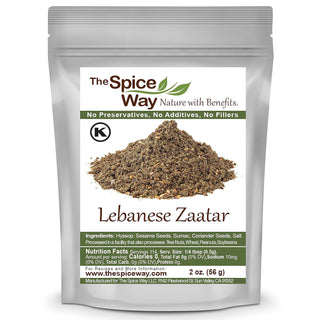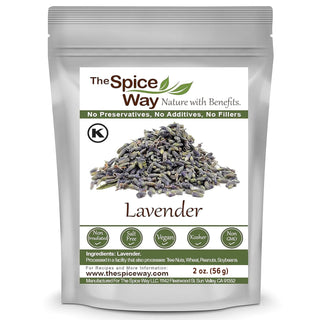Have you ever noticed a dish with a deep golden hue and a warm aroma, and wondered what made it so striking?
Turmeric powder, made from the dried and ground rhizome of the Curcuma longa plant, is the source of that glow. This spice has been a kitchen staple for centuries, prized for its distinctive taste, vibrant color, and ability to elevate a wide range of recipes.
In this guide, we’ll explore exactly what turmeric powder is used for — focusing on its role in the kitchen, its pairing potential, and ways to make the most of it in your cooking.
What Does Turmeric Powder Taste Like?
Turmeric’s flavor profile is earthy, slightly bitter, and warm, with peppery undertones. It’s more of a background builder than a dominant spice — working best in layers with other ingredients.
Key attributes:
-
Color: Rich yellow-orange, intensifies with cooking
-
Flavor: Earthy and mildly bitter, balancing richer foods
-
Texture: Fine, smooth powder that blends easily into liquids and oils
How Is Turmeric Powder Commonly Used in Cooking?
Turmeric powder is one of the most versatile spices in the pantry. Here’s how it appears in different types of recipes.
1. In Curries and Stews
Turmeric is a cornerstone of many South Asian and Middle Eastern dishes.
-
Use: Add ½–1 teaspoon while sautéing onions, garlic, or ginger to allow the flavor to bloom.
-
Why: Heat helps release its aroma and distribute color evenly.
-
Best in: Chickpea curry, lentil dal, lamb stew, vegetable korma.
2. In Rice Dishes
Turmeric can transform plain rice into an eye-catching side.
-
Method: Stir ½ teaspoon into cooking liquid for a golden tint and subtle warmth.
-
Pair with: Bay leaf, cardamom pods, or cumin seeds.
-
Serve with: Roasted vegetables, grilled chicken, or spiced fish.
3. In Marinades and Rubs
It adds depth and color to both plant- and animal-based proteins.
-
Dry rub example: Turmeric + paprika + coriander + salt.
-
Wet marinade example: Turmeric + olive oil + garlic + lemon juice.
-
Best for: Chicken thighs, salmon, and cauliflower steaks.
4. In Soups and Broths
Turmeric enhances both vegetarian and meat-based broths.
-
Use: Add early in the cooking process for even color and flavor integration.
-
Try in: Lentil soup, chicken noodle soup, pumpkin soup.
5. In Sauces and Dressings
Turmeric color makes sauces stand out visually.
-
Simple dressing: Olive oil + vinegar + turmeric + mustard + honey.
-
Yogurt sauce: Yogurt + turmeric + cumin + chopped parsley.
-
Serving tip: Great with grain bowls, falafel wraps, or roasted vegetables.
6. With Roasted Vegetables
Oven roasting brings out turmeric’s deeper notes.
-
Prep: Toss vegetables with olive oil, turmeric, salt, and pepper.
-
Best vegetables: Sweet potatoes, carrots, cauliflower, zucchini.
7. In Baked Goods
Turmeric works in savory baking or for color contrast in sweets.
-
Savory uses: Flatbreads, naan, crackers.
-
Sweet uses: Muffins with cinnamon and ginger, golden shortbread.
8. In Spice Blends
Turmeric is a base in blends like:
-
Garam masala
-
Ras el hanout
-
Curry powder
Its role: color enhancer + background flavor that ties other spices together.
How to Get the Best Results When Cooking with Turmeric Powder
-
Cook briefly in fat: Helps the flavor bloom and color disperse.
-
Avoid high-heat burning: Overheating can make it bitter.
-
Balance the taste: Pair with warming spices (cinnamon, nutmeg) or fresh herbs.
-
Measure carefully: Start with small amounts; turmeric’s flavor intensifies as it cooks.
-
Store well: Airtight jar, away from light and moisture.
People Also Ask–Style Quick Answers
What dishes use turmeric powder?
Turmeric is used in curries, rice, soups, marinades, roasted vegetables, sauces, and spice blends.
Can turmeric be used in baking?
Yes — especially in flatbreads, savory crackers, muffins, and shortbread for color and subtle warmth.
When should I add turmeric while cooking?
Add it early, ideally when sautéing aromatics, so the flavor and color infuse evenly.
Regional & Cultural Uses of Turmeric Powder
While turmeric is essential in Indian cooking, it appears in many global cuisines:
-
Indonesia & Malaysia: In rendang and yellow rice.
-
Middle East: In spice blends like baharat and tagine seasoning.
-
Africa: In pilau rice and spiced stews.
-
Caribbean: In jerk seasoning and curried goat.
Example Recipe: Turmeric-Spiced Vegetable Pilaf
Ingredients:
-
1½ cups basmati rice
-
2 tbsp olive oil
-
1 onion, diced
-
1 tsp turmeric powder
-
1 carrot, diced
-
½ cup peas
-
Salt to taste
Instructions:
-
Rinse rice until water runs clear.
-
In a pot, heat oil and sauté onion until soft.
-
Stir in turmeric and carrot, cooking for 1 minute.
-
Add rice, peas, and 3 cups water. Bring to a boil.
-
Reduce heat, cover, and simmer until rice is tender.
-
Fluff and serve warm.
Pairing Turmeric with Other Ingredients
Spice partners: Cumin, coriander, paprika, black pepper, ginger.
Herb partners: Cilantro, parsley, dill.
Base ingredients: Coconut milk, tomato paste, yogurt.
Proteins: Lentils, chickpeas, chicken, white fish.
Tip: Black pepper is often paired with turmeric to balance flavor and round out its bitterness.
Using Turmeric Beyond the Main Dish
While cooking is the main context, turmeric can also be used for:
-
Homemade spice blends for gifting.
-
Natural food coloring for pickles or condiments.
-
Thematic plating for presentation in food photography.
Storing and Handling Turmeric Powder
-
Container: Airtight glass jar.
-
Shelf life: Best flavor within 12 months.
-
Avoid: Humidity, direct sunlight.
-
Stain caution: Keep away from porous surfaces and light fabrics.
Final Take
Turmeric powder is a flavor-builder, color-enhancer, and pantry essential that adapts to countless recipes.
From a pinch in soup to a starring role in a rice dish, its warmth and golden hue make it one of the most useful spices you can keep on hand.
If you want to experiment with turmeric in your own cooking, start small and build your comfort with it in a variety of dishes. And for the best results, choose fresh, high-quality turmeric powder — it makes all the difference in both taste and appearance.


